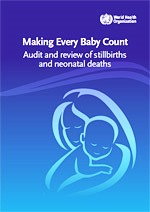A key component of any health system is health information. This is essential to inform policies and the planning process.
To be useful, data need to be:
- easy to collect—rather than require too much time from health providers
- reliable, to be provided in a timely manner across the system
- transformed into information for use for decision-making
- fed back in a user-friendly format—preferring maps and graphs rather than tables whenever possible—to those who collected it, for use also at their level.
When introducing IMCI, many countries in the Region have felt the need to collect information to monitor implementation and performance of intermediate outcome indicators. One of the challenges has been to make the IMCI action-oriented classifications at primary health care level compatible with the disease-oriented HIS classifications.
Usually, countries have introduced in health facilities the IMCI clinical recording forms used during IMCI training courses, as health providers have been trained in their use and find them a useful guide to the clinical management of a child.
Based on those forms, some countries have introduced or modified registers for under-5 children, with information due to be summarized and reported to the higher level monthly. In some cases HIS classifications have been modified to include the IMCI classifications, simplifying the recording and reporting job at primary health care level. These approaches need to be evaluated.
Related links
 Making every baby count: audit and review of stillbirths and neonatal deaths
Making every baby count: audit and review of stillbirths and neonatal deaths




